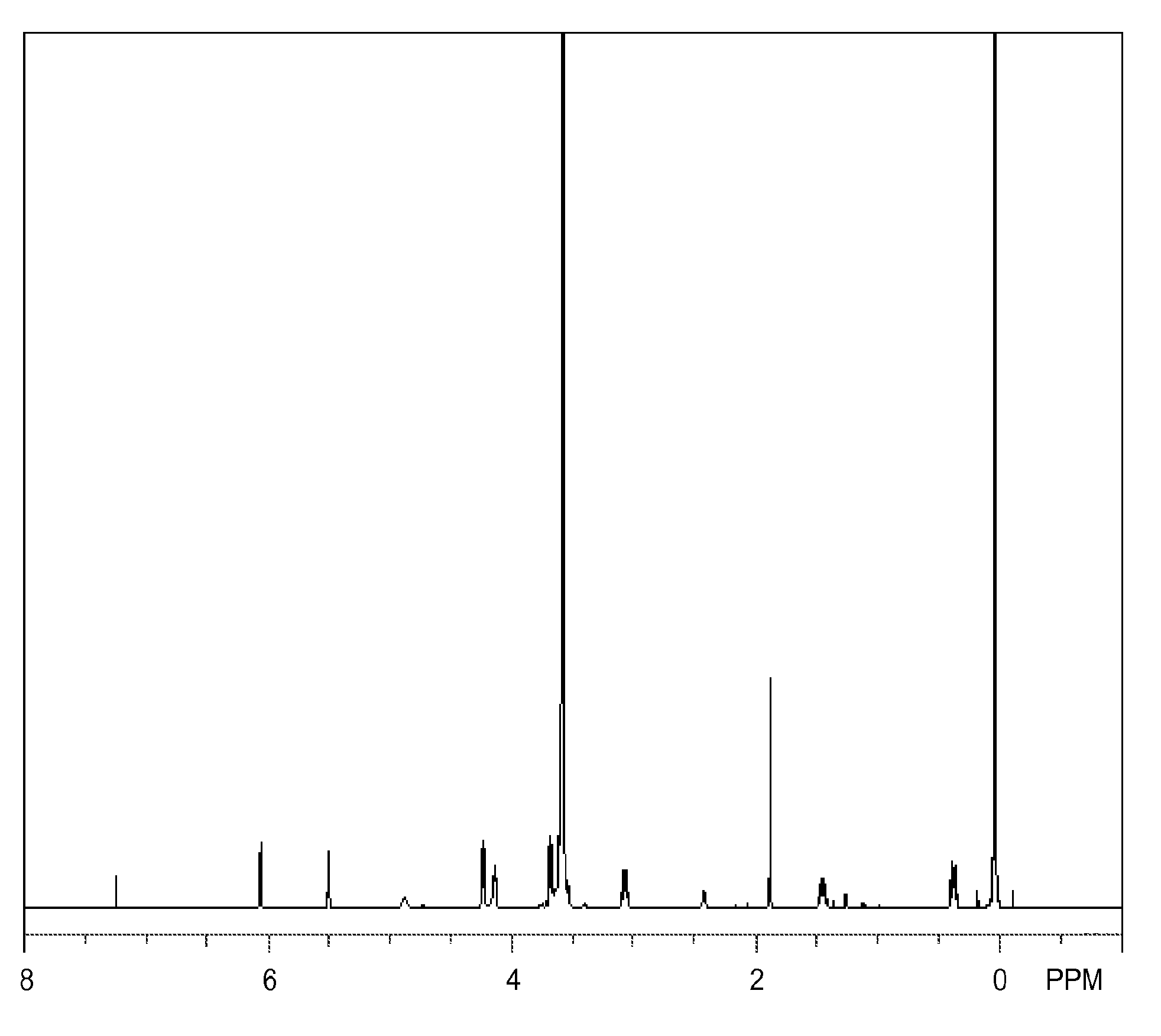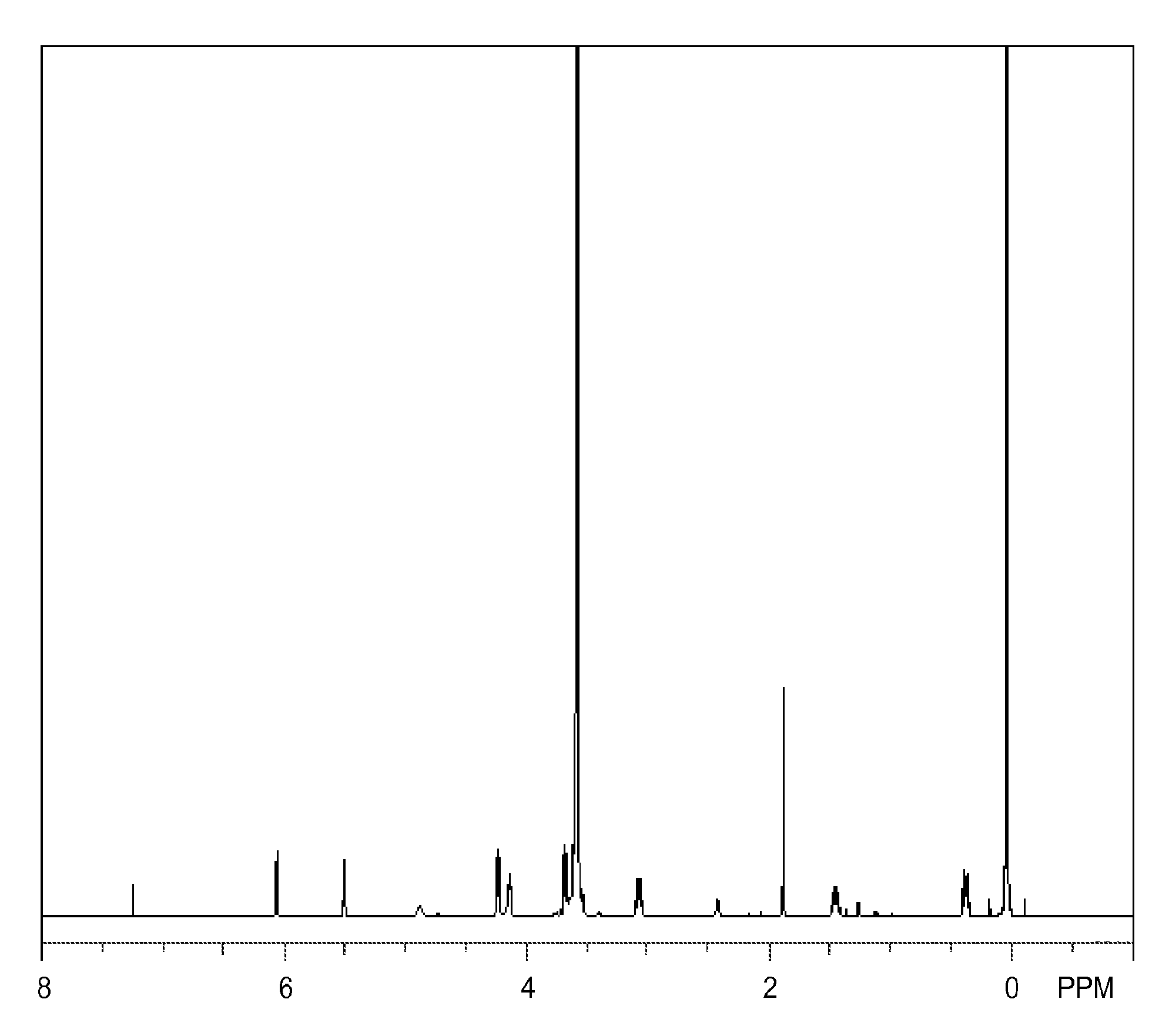Tris(trimethyl siloxyl)silane vinylic monomers and uses thereof
a technology of trimethyl siloxyl and silane, which is applied in the field of trimethyl siloxyl silane vinylic monomers, can solve the problems of increased production cost of lens extraction process, unsuitable water-based silicone hydrogel lens formulation, and unfriendly to the environmen
- Summary
- Abstract
- Description
- Claims
- Application Information
AI Technical Summary
Benefits of technology
Problems solved by technology
Method used
Image
Examples
example 1
Oxygen Permeability Measurements.
[0107]The apparent oxygen permeability of a lens and oxygen transmissibility of a lens material is determined according to a technique similar to the one described in U.S. Pat. No. 5,760,100 and in an article by Winterton et al., (The Cornea: Transactions of the World Congress on the Cornea 111, H. D. Cavanagh Ed., Raven Press: New York 1988, pp 273-280), both of which are herein incorporated by reference in their entireties. Oxygen fluxes (J) are measured at 34° C. in a wet cell (i.e., gas streams are maintained at about 100% relative humidity) using a Dk1000 instrument (available from Applied Design and Development Co., Norcross, Ga.), or similar analytical instrument. An air stream, having a known percentage of oxygen (e.g., 21%), is passed across one side of the lens at a rate of about 10 to 20 cm3 / min., while a nitrogen stream is passed on the opposite side of the lens at a rate of about 10 to 20 cm3 / min. A sample is equilibrated in a test media...
example 2
Synthesis of Monomer (1A)
[0124]A 2-L flask equipped with a Dimroth condenser, thermometer and dropping funnel is charged with 471 g (1.1 mol) of MA-80A (q1=8, Nippon Nyukazai Co., Ltd., hydroxyl number 131 mg KOH / g, polyethylene glycol / polyoxyethylene dimethacrylate / II=5 / 10 / 85), 0.09 g (100 ppm based on reactants) of tris(2,4-pentanedionato)iron(III) as urethane-forming catalyst, and 800 g of methyl ethyl ketone as solvent. The flask is heated at 30° C. whereupon 379 g (1 mol) of tris(trimethylsiloxy)silylpropyl isocyanate is added dropwise from the dropping funnel over one hour. At this point, the internal temperature rises to 40° C. Reaction is continued at an internal temperature of 35-45° C. for 3 hours. On IR analysis, the consumption of isocyanate group is confirmed. Silica gel, 170 g, is added to the reaction solution, which is stirred for one hour for decoloring. The silica gel is filtered off, and the solvent, MEK is distilled off in vacuum at an internal temperature of 60°...
example 3
Synthesis of Macromers
[0128]Macromers are synthesized according to the following procedures in substantial accordance with teachings in Example B-1 to B-4 of U.S. Pat. No. 5,849,811.
[0129]51.5 g (50 mmol) of the perfluoropolyether Fomblin® ZDOL (from Ausimont S.p.A, Milan) having a mean molecular weight of 1030 g / mol and containing 1.96 meq / g of hydroxyl groups according to end-group titration is introduced into a three-neck flask together with 50 mg of dibutyltin dilaurate. The flask contents are evacuated to about 20 mbar with stirring and subsequently decompressed with argon. This operation is repeated twice. 22.2 g (0.1 mol) of freshly distilled isophorone diisocyanate kept under argon are subsequently added in a counterstream of argon. The temperature in the flask is kept below 30° C. by cooling with a waterbath. After stirring overnight at room temperature, the reaction is complete. Isocyanate titration gives an NCO content of 1.40 meq / g (theory: 1.35 meq / g).
[0130]202 g of the...
PUM
| Property | Measurement | Unit |
|---|---|---|
| elastic modulus | aaaaa | aaaaa |
| temperature | aaaaa | aaaaa |
| molecular weight | aaaaa | aaaaa |
Abstract
Description
Claims
Application Information
 Login to View More
Login to View More - R&D
- Intellectual Property
- Life Sciences
- Materials
- Tech Scout
- Unparalleled Data Quality
- Higher Quality Content
- 60% Fewer Hallucinations
Browse by: Latest US Patents, China's latest patents, Technical Efficacy Thesaurus, Application Domain, Technology Topic, Popular Technical Reports.
© 2025 PatSnap. All rights reserved.Legal|Privacy policy|Modern Slavery Act Transparency Statement|Sitemap|About US| Contact US: help@patsnap.com



